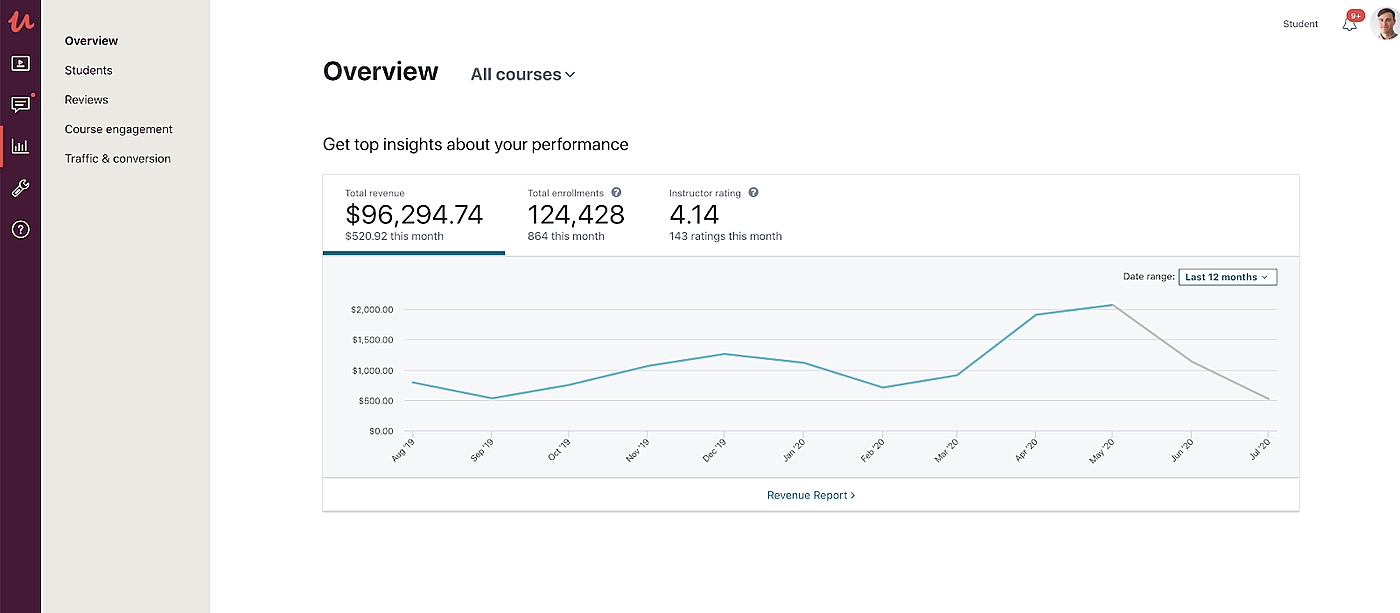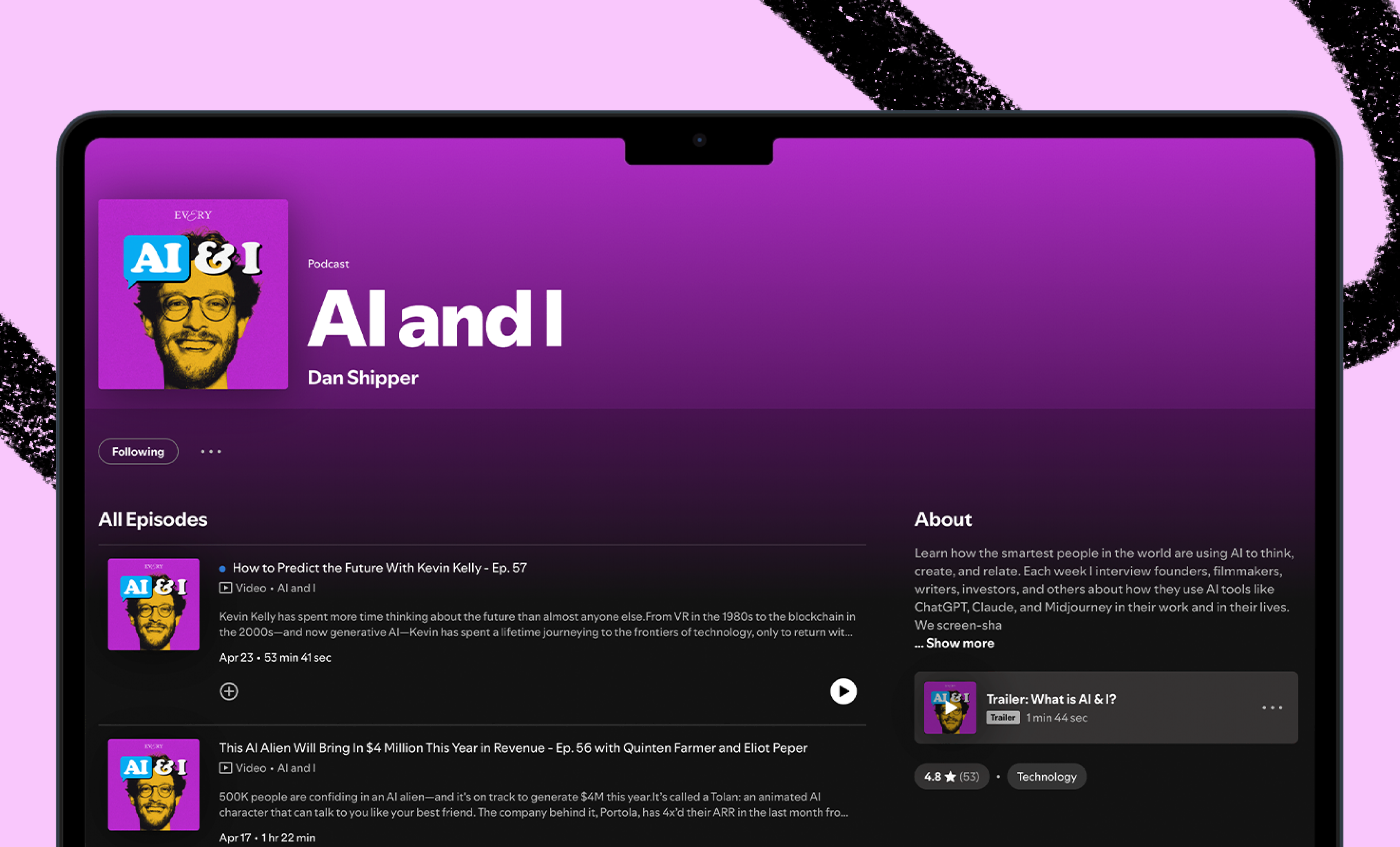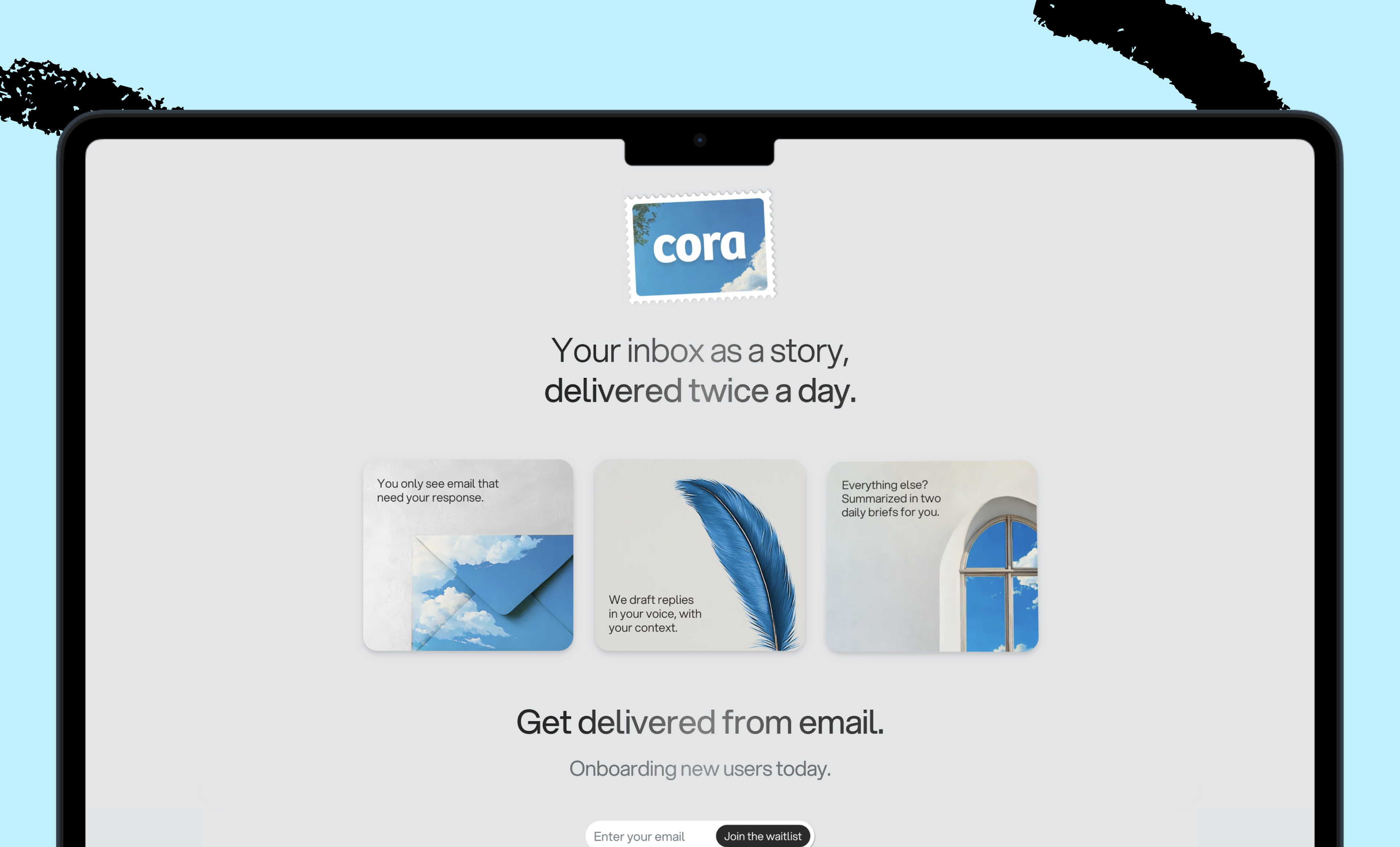
Ah, the side hustle.
I've become somewhat of a (self-proclaimed) expert at doing random side things over the course of my life.
In the last decade I've created Udemy courses, launched a self-published book (under a fake name – not proud of this one), done marketing consulting, launched an email course (with a paid back-end), Airbnb’ed my apartment, bought a condo and put it on Airbnb, wrote a book (an actual good one), bought a business (and now another one), put affiliate links on my site, given paid talks, written book summaries, and built an affiliate site for a basketball dribbling course (also not proud of this one).
Heck, even my current company began as a side project.
And those are just the ones that worked! I've tried tons of other things – buying motorcycles on Craigslist and flipping them across the bay, starting an affiliate site for people with eyebrow dander (like myself), building an email course for people interested in nootropics… the list goes on.
I've seen firsthand how freeing it is to make even $1-2k a month on your own.
It’s a complete game changer, waking up with more money than you had when you went to sleep. For too long, I'd start my day by refreshing Udemy’s instructor dashboard to see how much I'd make. Then the Traction Amazon page to see our sales, then Airbnb...
Making money via side businesses (or side hustles) gave me the confidence to quit Rackspace and go out on my own 4 years ago. Having a few thousand a month coming in on autopilot gave me the freedom to charge premium rates as a growth consultant, as I knew I'd be okay if they said no.
Side hustles can grow and evolve, but to work they need to have a few traits. They need to:
- Solve a problem someone is already aware of
- NOT require a lot of maintenance or hand-holding
- Have a no-brainer path to profitability
In my experience, there are 4 ways to build a successful side hustle:
- Buy an existing asset
- Launch a product on a marketplace with existing demand
- Launch a unique, one of a kind product in a new space where you can buy demand (Adwords, Facebook, etc.)
- Arbitrage (Craigslist, Airbnb, trading, Uber)
Let’s cover them one at a time.
1. Buy an existing asset
This one is probably the easiest, and can require the most money to pull off. But not always - two of my businesses I’ve bought with $0 down.
It’s also pretty self explanatory. Buying an apartment and renting it out to someone is one of the most common ways to generate income in the US. You buy an existing asset (a house) and rent it out on a monthly basis. After a few years, you’ll have made your initial money back and the rest is just profit. Easy!
Real estate is the easiest example, but you can apply this concept (pay a lump sum up front in exchange for regular payments later on) to all kinds of things.
My partner Ryan and I did exactly this when we bought Fomo. We loved the app, it was growing well and kicking off steady cashflow. So, we bought it.
It’s the way we structured it that’s key. We seller-financed the deal, meaning we bought it for an up-front price and made the payments over time. Amazing!
We’re now applying the same strategy to more apps: buy a Shopify app up front, enjoy the monthly profits into (hopefully) eternity.
Beyond real estate and Shopify apps, there are all kinds of existing assets you can buy. I know one guy who found a watercolor tutorial site with a ton of organic traffic. To monetize, the site was showing Google ads on the sidebar, and using Amazon affiliate links. All told, it was pulling in $500-1000 per month.
My friend then bought the site, developed a paid course around learning to paint watercolor, and was making 10k+ a month in just under 6 months.
I've had other acquaintances buy the rights to unpopular songs or jingles and collect on royalties, others who buy YouTube channels or Instagram accounts, and still others who buy Amazon businesses. The list of existing assets you can buy are practically endless, and if you have 1-2 ideas as to how you can improve an asset, you could have a winner on your hands.
Even better, with Shopify exchange you can now buy existing sites for next to nothing (some sites go for $250) and get some experience building a business.
2. Launch a product on a marketplace with existing demand
This is my favorite way to launch a side business: spend time on a marketplace where people are spending money, and figure out how to create a product that people are looking for.
Example – a few years ago, my roommate and I ran the 2nd ranked Airbnb in San Francisco. We were renting out our living room for $250, (or our whole apartment for $500+) and making a killing.
How?
Mainly, by paying close attention to what Airbnb wanted. We realized that – from Airbnb’s perspective – they want hosts who do a few things:
- Communicate quickly with potential guests
- Accepts as many stay requests as possible
- Gets lots of 5 star reviews
- Has a listing with great photos and a high conversion rate
A listing with the above qualities is one that will make Airbnb the most money.
We created a profile with TONS of photos of our place, the surrounding area, tourist attractions, fun things to do… basically every photo of our area we could add, we did.
Next, we asked our potential guests to message us the dates they were thinking of booking BEFORE they booked or submitted a request.
This step allowed us to respond quickly to guests (boosting our #1 criteria) and meant that – as long as we verbally approved the requested dates – we had nearly a 100% rate of accepting booking requests.
Just by optimizing these areas, we pretty quickly had a top 3 Airbnb in San Francisco.
Let's take another example. A few years back, I launched SQL for Marketers, a Udemy course teaching marketers how to use the SQL programming language without learning how to code.
I saw a gap in the market, and had friends making Udemy courses and doing well. So, I decided to make my own.
I started by evaluating other courses on the Udemy marketplace, and realized that – from Udemy’s standpoint – their best courses would be those that:
- Drew a lot of student registrations
- Were highly rated
- Had good student engagement
So, odds are if you create a course that fulfills those conditions, you have a Udemy winner on your hands.
Earnings since 2015 when I first launched on Udemy
Once you recognize what a given platform wants, your job as a side hustler is to fulfill that algorithm’s desires.
The principle stands: if you can find a niche on a marketplace that you think you’ll be able to own with some time, the results can be remarkable. This is the truest side hustle there is, as the marketplace will do the hard work of acquiring and servicing customers for you.
If I were to start another side business now, the platforms I'd look at are:
- Skillshare / Udemy
- eBay / Amazon
- the Shopify app store
- the Google Chrome app store
- any sort of niche marketplace where people buy stuff: Wordpress themes, Woocommerce themes, Webflow, etc
Now get started 🙂
3. Launch a unique product in an area where you can buy customers via paid acquisition (Adwords, Facebook, etc.)
This one is the most similar to building a startup. however, there are a few things that make this different:
- You want to focus strictly on small niches. Not because you don’t want to make money, but because you don’t want to face a ton of competition. The smaller the space, the less likely it is that a larger company launches a similar product, or a VC-backed startup raises $5mm to come after you. Not fun.
- You must be able to acquire customers via paid acquisition: ads on Facebook, Instagram and Google.
- Your product must be unique, or uniquely solve a niche problem that thousands of people have.
Great businesses I've seen in this category include things like ColorIt, themed journals of all kinds (ie the Five Minute Journal), Brennan Dunn’s email course, this software app for florists.
When we started Kettle & Fire, we thought it would fall into this category: niche category where we could build a small, profitable business. But as soon as we launched we realized the business was much larger than we could have anticipated 🤷.
That said, building a product is hard. It requires some direct experience with a problem (even a small one), and some creativity + original thinking. The key here is doing something differentiated that’s appealing to a given niche.
A good way to get ideas in this area is to look at niche products that have been successful elsewhere and apply them to a niche you care about.
For example, I've noticed over the last few years an explosion of popular daily journals: the Five Minute Journal, Daily Quotes, 5 Year Journal, Daily Stoic, etc.
What if you combined this interest – people want daily journals – with a niche you cared about?
For example, if you created a journal for people just starting a ketogenic diet… one with recipes, challenges, educational material and a community they could turn to for support… would that work?
I don’t know. But it might.
The other iteration I've seen work well here is applying your skills to a niche in a way that’s a low time investment but high ROI for your clients.
For example, if you have some expertise in A/B testing, set up and run 1-3 A/B tests for e-commerce or SaaS businesses a month. Charge 1-2k, and give high-level weekly reporting.
This would likely take you 2-3 days of setup per month, and then another 1-2 days to fully report everything. And yet – if you know your stuff – the ROI will almost certainly be there for the company.
In fact, all of my companies pay an agency to do just this model. They run 3-5 A/B tests a month for us, report back and make changes. We pay them 4-5k a month, and always make more than that from the tests. No brainer.
This flavor of side hustle works especially well if you have expertise in something that can make a company more money (i.e. marketing or sales), or expertise in an area where you can save them some serious dough.
P.S. If you've read this far and want an idea for a product in this space, hit me up. I have a ton of these small ideas yet no time to do them myself.
4. Arbitrages
This one works, but is probably my least favorite of the bunch. It involves finding an arbitrage between two assets and exploiting that for profit.
What do I mean? Here’s an example.
A few years ago, I realized there was an arbitrage near San Francisco, where I lived. People were selling motorcycles for $2,000 in Oakland… and the same bikes would go for $2,500 in San Francisco. Right across a bridge.
This is clearly an arbitrage opportunity. A bike in Oakland is not worth less than the same one in San Francisco.
So, there’s the opportunity – buy the bike for $2k in Oakland, drive it across the bridge and sell it for $2500. Instantly profit $500 with relatively little risk.
Similar arbitrages exist everywhere. My old roommate for a while was buying Toyota Prius’ and paying people minimum wage to drive them around taking Uber rides. He'd then take the difference between what Uber paid him and what he paid his drivers… often 5-10k a month.
There are similar ones with buying goods on Craigslist and selling them on eBay/Amazon, buying goods wholesale and selling them off on Craigslist, or even buying bottled water at Costco and selling it by the bottle outside baseball stadiums. All arbitrages.
Now, why don’t I love these sorts of side businesses? A few reasons.
First, they tend to become crowded pretty quickly. Markets trend towards efficiency, which makes it really hard to consistently have very profitable arbitrage opportunities. In fact, with the motorcycle thing, I suspect a few other people started doing the same thing and I was quickly getting outbid for bikes. Not great.
Secondly, these sorts of arbitrage opportunities can be rare, which makes them not ideal for a side business (since the income is unpredictable).
Lastly, arbitrages can take a lot of time up-front to find, and can go away quickly enough that the up-front investment isn’t worth it. Such arbs can be great in the financial world, but not as great in the world of side hustles.
I hope this explanation gave you some good ideas for side businesses you could start.
In the next post, I’ll break down how exactly I tested my idea for Kettle & Fire before launching it so that I knew it’d work from day 1.
Since my $400 test, Kettle & Fire has since become a multi-million dollar enterprise. And it all started with a quick and dirty MVP test.
I'll also show you the exact steps I took to move quickly and determine in a short period of time if a side business is going to work.
The Only Subscription
You Need to
Stay at the
Edge of AI
The essential toolkit for those shaping the future
"This might be the best value you
can get from an AI subscription."
- Jay S.
Join 100,000+ leaders, builders, and innovators

Email address
Already have an account? Sign in
What is included in a subscription?
Daily insights from AI pioneers + early access to powerful AI tools











Comments
Don't have an account? Sign up!
Love this. Appreciate the candid advice.